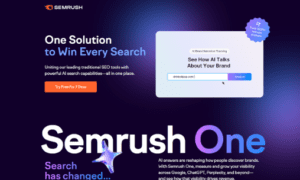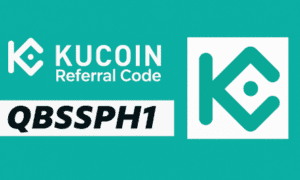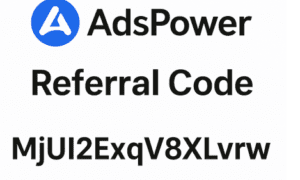Secrets to Business Velocity: How Leaders Use Employee Feedback
Unlocking business velocity requires more than just strategy—it demands a keen ear for employee feedback. This article explores how savvy leaders harness the power of their teams’ insights to drive efficiency and innovation. Drawing from expert knowledge and real-world examples, readers will discover practical ways to transform employee input into tangible business acceleration.
- Crack Open Bottlenecks with Employee Insights
- Revamp Onboarding to Boost Team Productivity
- Consolidate Workflows to Increase Momentum
- Implement Skip-Level Meetings for Efficiency Gains
- Automate Intake to Accelerate Client Onboarding
- Streamline Processes Based on Team Feedback
- Leverage Micro-Communities for User Acquisition
- Digitize Intake to Reduce Case Turnaround
- Redesign Workflows to Eliminate Decision Delays
- Create Real-Time Feedback Loops for Innovation
- Engineer-Specific Stock Lists Reduce Downtime
- Redesign Client Briefs to Minimize Rework
- Simplify Program Structure to Boost Engagement
- Tailor Intake Forms to Streamline Legal Processes
- Implement AI Tools for Faster Marketing Decisions
- Conduct Friction Audits to Address Bottlenecks
- Collect and Implement Annoying Problem Solutions
- Empower Employees to Shape Service Offerings
Crack Open Bottlenecks with Employee Insights
We once had a junior team member who was quiet and sharp and barely touched the Slack threads. This team member dropped a truth bomb in a retro: “Why does it take longer to approve an ad than to build it?” It was brutal but accurate. That one comment cracked open a bottleneck we didn’t know we were sitting on.
We rebuilt the review process so the people closest to the work had more authority, fewer handoffs, and clearer thresholds. As a result, turnaround time dropped, and morale went up.
But here’s the thing: If you want feedback that’s honest, you’ve got to eliminate the perception that feedback equals trouble. I make it a point to thank people publicly when they challenge the status quo.
One tip? Treat every piece of feedback like a clue, not a complaint. The gold is usually buried in the stuff no one wants to say out loud.
Cody Jensen, CEO & Founder, Searchbloom
Revamp Onboarding to Boost Team Productivity
One way we increased business velocity was by acting on feedback from our team about the onboarding process for new hires. Early on, we noticed that new employees were taking longer than expected to become fully productive, which slowed down project timelines.
To get honest feedback, we created a safe space through anonymous surveys and one-on-one check-ins where employees could share their real experiences without fear of judgment. We also emphasized that their input was crucial for improving the company, not just a formality.
From their suggestions, it became clear that our onboarding materials were outdated and inconsistent. We revamped the process—creating clear, step-by-step guides, introducing a mentorship program, and setting measurable milestones for new hires.
As a result, new employees ramped up faster, which directly sped up project delivery and boosted overall team morale.
When acting on employee feedback, prioritize changes that remove clear bottlenecks or pain points. Communicate openly about what’s being implemented and why. This shows you’re listening and encourages more honest input in the future.
Gabirjel Zelic, Senior Analyst and Data Studio Expert, MeasureMinds Group
Consolidate Workflows to Increase Momentum
One of the most game-changing decisions we made came from a throwaway comment during a casual Friday team call. Someone said, “I love what we do, but context-switching between five different tools to complete one task is killing momentum.” That was the spark.
I started carving out space in our sprint cycles just for feedback—casual, non-performative, and unfiltered. No forms, no surveys, just open dialogue. People don’t give real feedback if they think it’s going straight into a black hole, so we flipped the script: when we acted on an idea, we made it loud. Slack shoutouts, retro wins, client call mentions—you name it.
That comment turned into a full-blown systems audit, and we consolidated our workflows. The result? Fewer tabs, less mental friction, and measurable velocity gains across key project lanes.
Here’s the tip I live by: if you want honest feedback, don’t just listen—loop people into the solution. Let them co-create the fix, not just point out the cracks. That’s where momentum lives.
John Mac, Serial Entrepreneur, UNIBATT
Implement Skip-Level Meetings for Efficiency Gains
One thing that worked well for us was holding skip-level one-on-one meetings—me connecting with team members a couple of levels down. I’d block 20 minutes, ask one question: “What’s slowing you down?” and just listen. No script. No judgment.
One engineer mentioned how scattered our updates were across Slack, email, Jira, and meetings. So we created one shared asynchronous document per sprint. That small shift saved hours every week.
To encourage honest feedback, I made it clear I wasn’t there as a VP. I was just another team member trying to improve how we work. That lowered walls.
My one tip: act fast and give credit. When someone’s idea leads to change, name them. It builds trust and shows feedback actually matters.
Vikrant Bhalodia, Head of Marketing & People Ops, WeblineIndia
Automate Intake to Accelerate Client Onboarding
I set up an anonymous “Voice-It” form in Notion where team members could share candid takeaways on our client onboarding process. Within two weeks, several people flagged that our manual intake calls were a bottleneck, so we built a templated intake questionnaire and automated follow-ups via MailerLite. Onboarding time shrank by 30%, allowing us to kick off projects faster and boost billable hours.
To encourage honesty, I carve out a quarterly “Feedback Friday” and guarantee zero repercussions: every submission is reviewed live in our #lab-talks channel, and I thank each contributor by name (or alias, if they prefer). My top tip for acting on suggestions is to “pilot and publicize”: pick one employee idea each month, run a two-week MVP test, and then share results and next steps company-wide. That closed loop builds trust—and momentum—so feedback keeps flowing and velocity keeps rising.
Kristin Marquet, Founder & Creative Director, Marquet Media
Streamline Processes Based on Team Feedback
One of the most impactful ways we’ve leveraged employee feedback was simplifying our internal processes. Early on, one of our team members pointed out how much time was wasted managing our ingredient sourcing through emails and spreadsheets. It was a small comment during a team meeting, but it hit a nerve. I followed up privately to learn more, then asked the team if others felt the same. It turns out they did. So, we moved to a centralized platform that streamlined everything. Suddenly, our operations became faster and less prone to errors. That one piece of feedback sparked a considerable boost in efficiency.
To get honest feedback, I clarify that no idea is too small or critical. I’ll often ask, “What’s one thing we’re doing that doesn’t make sense?” That question lowers the stakes and opens the door to honest conversations. When someone takes the time to point something out, I act quickly, even if it’s just acknowledging the idea and setting a timeline to explore it. My biggest tip? Don’t just collect suggestions. Show visible follow-through. When your team sees you listening and acting, the feedback gets sharper and more valuable.
Dan Steiner, Co-Founder, Good Laundry
Leverage Micro-Communities for User Acquisition
We once hit a plateau in our user acquisition strategy. While management debated tactics, a junior marketing analyst suggested trying out TikTok creators with built-in micro-communities—an angle we hadn’t considered. Her suggestion shifted our whole trajectory.
What worked:
1. We host monthly “Idea Showcases” where anyone can pitch growth ideas.
2. We act on at least one team idea per quarter and report back transparently.
3. We promote contributors—she was later fast-tracked to a strategic role.
Advice:
1. Make feedback visible—track it and show action taken.
2. Incentivize suggestions that create results.
3. Normalize failure; reward the process, not just the outcome.
David Diaz, Co-Founder and Chief Commercial Officer, Ray Browser
Digitize Intake to Reduce Case Turnaround
One clear way to increase business velocity is by listening closely to employee feedback. Those on the front lines of client interaction often spot inefficiencies before management does.
At my firm, we noticed through staff input that the client intake process was slowing us down. Employees reported that excessive paperwork and unclear communication delayed the case starts. Acting on this, we moved much of the intake online and streamlined communication protocols. This reduced turnaround time and allowed us to take on more cases efficiently.
To encourage honest feedback, creating a safe environment is crucial. We made sure employees understood their input would remain confidential and not harm their standing. Leaders asked open-ended questions and acknowledged all responses without judgment. This approach built trust and increased participation. We also emphasized that feedback would lead to real changes, so employees felt their voices mattered. Without this trust, employees often hold back, limiting growth opportunities.
A key tip for acting on employee suggestions is setting clear priorities and assigning responsibility. Not every idea will have the same impact, so focus on those that directly improve speed or client experience. Assign team members to lead initiatives and set measurable goals. For example, after digitizing intake forms, we tracked client wait times monthly to assess progress. Regular updates reinforce accountability and keep the momentum going.
Brian Joslyn, Owner, Joslyn Law Firm
Redesign Workflows to Eliminate Decision Delays
During one of our internal retrospectives, my engineer mentioned they were spending too much time waiting for decisions. Simple things like approvals, clarifications, and feedback on things they’d already built were causing delays.
That comment stuck with me because I realized it wasn’t a problem with skill or effort but a friction point in the system, and it was slowing everyone down more than we realized.
So I asked a few more people on the team if they were seeing the same thing. And they were. Developers were holding onto work longer than needed. Operations was rechecking things that didn’t need approval.
Everyone was doing good work, but the handoffs were clunky.
That’s when I realized we didn’t need to push people to work faster. Rather, we needed to redesign the workflow so they could move without waiting.
What I did was map out the most common decision points across teams and then ask each lead, “What could we pre-approve, pre-define, or automate so this doesn’t get stuck again?”
From that feedback, we created lightweight decision trees, added shared checklists, and shifted some approvals to asynchronous reviews. When all of that was set and done, our process became much smoother and easier.
Now, to encourage honest feedback, I try to make retrospectives feel safe and low-pressure. I ask open questions, but more importantly, I act quickly when someone raises a real concern. What I’ve learned is that when your people see that their input turns into real change—even small change—they’re more likely to speak up next time.
If I had one tip for other founders, it’s this: When someone points out friction, don’t dismiss it just because it’s small. You have to remember that even small frictions, repeated across a team, cost you speed. And if you fix them early, you buy back velocity without burning people out.
Cahyo Subroto, Founder, MrScraper
Create Real-Time Feedback Loops for Innovation
We believe that speed without alignment leads to absolute chaos—but velocity with purpose is power. One of our most impactful accelerators came from an unexpected source: a suggestion from a junior team member who flagged inefficiencies in how we were handling cross-functional client briefs. It was a moment that reminded me: when people feel safe enough to speak, innovation gets invited to the table.
We responded by creating a real-time feedback loop within our internal systems—quick, low-friction prompts that invite input after every major campaign touchpoint. This shift came not from leadership’s top-down view, but from someone on the ground for whom the system was awkward. They didn’t realize it, but it was also where friction was costing us time and cohesion. We acted fast and involved that same employee in shaping the solution, which made the rollout authentic and widely adopted.
To get honest feedback, leaders must model curiosity and disarm fear. I openly tell our team: “The only idea that doesn’t belong here is the one you didn’t share.” My tip? When someone offers a solution, resist the instinct to fix or critique. Instead, elevate the idea, explore it out loud, and—most importantly—give credit publicly. When your people feel seen, they lean in. And when they lean in, your business moves forward faster, smarter, and with far more soul.
Julie Koester, Founder / Managing Partner / Co-CEO, Dragon Horse Agency
Engineer-Specific Stock Lists Reduce Downtime
During a van stock audit, a technician mentioned wasting time chasing missing parts. This single comment led to a wider review. We tracked how often jobs stalled due to inventory gaps and found that delays were happening more frequently than expected. In response, we built engineer-specific stock lists based on job types and introduced weekly restocking based on usage. This change reduced downtime, improved first-time fix rates, and gave engineers more control over their workflow.
I don’t wait for formal reviews. Instead, I ask for feedback during site visits, team calls, or while loading vans. One of the best changes we made—switching from paper risk assessments to a mobile version—came from a casual conversation with an engineer. The paper forms were slowing him down, and the team wasn’t completing them consistently. Now the process is faster, fits our workflow, and gets done properly.
When someone gives useful feedback, it’s important to share the outcome. Let the team know what changed and who raised the issue. If people see no result, they stop offering ideas. Visible action builds trust and shows that what they say has weight.
The key is to address small friction points. Ask what’s slowing them down, not what would make things better. Minor issues often reveal larger inefficiencies. When you collect these insights regularly and act on them quickly, the improvements compound. That’s how you move faster without pushing harder. That’s how you build a team that speaks up and a business that listens.
Lisa Clark, Director, Bell Fire and Security
Redesign Client Briefs to Minimize Rework
We noticed bottlenecks in our project turnaround time, so I asked the team during a casual Friday huddle, “What slows you down the most?” One writer pointed out how unclear briefs from clients often caused rework. That insight led us to redesign our onboarding form and set up a 15-minute alignment call before each project.
To encourage honest feedback, I avoid formal surveys and instead ask questions during everyday conversations. It feels safer and more genuine.
My tip is: don’t just collect feedback—close the loop. Let your team know what action you took based on their input. It builds trust and keeps the ideas flowing.
Kritika Kanodia, CEO, Kalam Kagaz
Simplify Program Structure to Boost Engagement
I manage a small team during seasonal group programs, and one year, feedback revealed something unexpected: participants felt emotionally overwhelmed when too many modalities were presented in consecutive sessions. In one week, we taught somatic work; the next focused on cycle syncing, followed by breathwork. While this sequence appeared cohesive on paper, it completely overwhelmed people in practice. This comment surfaced repeatedly, indicating that I needed to restructure our format.
I simplified everything. We shifted to covering one method per week and added a midweek voice note from the facilitator to help participants apply what they had learned. This adjustment resulted in higher completion rates and deeper engagement, particularly among clients balancing caregiving responsibilities or managing perimenopausal fatigue. What truly improved our results involved removing distractions rather than adding more content.
To collect genuinely useful feedback, I avoid asking what participants enjoyed. Instead, I ask what they would pause or skip entirely. This approach reveals friction points without making people feel critical. Then I implement one change quickly and visibly. When people offer insights, they need to see their input reflected in actions. Listening without adjusting creates frustration. Making even small changes builds momentum. Real velocity comes from clarity, not volume.
Clara Whitlow, Women’s Wellness Coach and Sex Educator, Clara Whitlow
Tailor Intake Forms to Streamline Legal Processes
In a legal practice, business velocity is often tied directly to how efficiently the team can handle casework, respond to clients, and manage deadlines. One way we increased our firm’s efficiency was by listening closely to feedback from legal assistants and support staff. They shared that intake forms from new clients were often incomplete or unclear, which caused delays in opening files and required follow-up that took valuable time away from more substantive legal work.
After hearing this, we reviewed the intake process together and realized the forms were too broad and not tailored to different case types. With their input, we created more focused forms based on specific legal services: real estate, probate, and estate planning. This small change had a big impact. It reduced back-and-forth communication, improved the accuracy of initial information, and allowed attorneys to begin reviewing files sooner. As a result, our case timelines shortened, and clients experienced a smoother onboarding process.
To encourage honest feedback, we held short monthly check-ins where team members could share ideas or point out bottlenecks without pressure. Creating a culture where staff feel heard and respected is essential in law, where precision and timing matter every day. One tip for acting on employee suggestions is to implement changes in a way that includes their perspective from start to finish. When people see their input lead to real improvements, they stay engaged and continue looking for ways to help the business grow. In law, as in any service profession, internal teamwork and efficiency directly affect client experience and business success.
Michael Merhar, Attorney/Owner, Merhar Law
Implement AI Tools for Faster Marketing Decisions
One of the most effective ways we’ve increased business velocity came directly from employee feedback regarding our marketing automation processes. Some team members pointed out that while we collected substantial data, it wasn’t always utilized quickly enough to make campaign decisions. This observation opened my eyes to a gap between data collection and real-time action.
We revamped how we surface and act on insights, introducing AI tools that immediately flag campaign anomalies or opportunities. This led to faster pivots and better targeting, ultimately improving conversion rates.
The key to receiving honest feedback like that is creating a culture where input isn’t just welcomed; it’s expected. I make it a point to highlight when feedback leads to real change because it builds trust and demonstrates that speaking up makes a difference.
One tip for acting on suggestions is to move quickly on small wins. If someone offers an idea that’s easy to test, implement it and share the results. This creates momentum and shows the team that innovation doesn’t always need to come from the top. Sometimes, the best accelerators are the people already closest to the work. You just need to give them a voice.
Mark Baars, Digital Marketing Innovation Manager, Unit4
Conduct Friction Audits to Address Bottlenecks
One powerful approach we’ve implemented is conducting quarterly “friction audits” where team members identify their biggest time-wasters and bottlenecks. Rather than traditional surveys, we used anonymous recorded video responses where employees could walk through their actual workflows and pain points. This format captured nuanced problems that written feedback often misses.
To encourage honest input, I established a “no attribution, guaranteed action” policy. Every piece of feedback received a response within 48 hours explaining either how we’d address it or why we couldn’t tackle it immediately. This transparency built trust that feedback actually mattered. We also rotated who facilitated these sessions to avoid hierarchy bias.
The most impactful tip for acting on suggestions is to start with quick wins that demonstrate immediate responsiveness. When our sales team highlighted that prospect research was eating 2 hours daily, we implemented a simple automation within one week that cut research time by 60%. These visible improvements create momentum and signal that employee input drives real change, which increases participation in future feedback cycles.
Brandon George, Director of Demand Generation & Content, Thrive SEO Agency
Collect and Implement Annoying Problem Solutions
People closest to the work don’t always see the best opportunities, but they do see the worst friction points and most annoying problems. We encourage our team to keep a running log of the most annoying things they keep encountering in their day-to-day work, and we collect that feedback quarterly. Our leadership team analyzes and implements everything they can from there. We made the management decision to largely credit the team members who identify the pain points, so our staff knows they will be recognized for pointing these things out.
Maxwell Finn, Founder, Unicorn Innovations
Empower Employees to Shape Service Offerings
We’ve built our offering from the ground up by letting our team shape it, rather than simply copying what competitors do. Our people are actively involved in using our tools and communicating with clients daily, so we use them as our guiding light, listening to their insights and recommendations. We have empowered them to stay informed and shape their future, with the support of the leadership team, which adds value by contributing strategic insight and helping turn their ideas into tangible products. For example, our digital PR and organic social media services grew in this manner, driven entirely by employee input.
If you want to obtain honest feedback, you need to create a culture where people know they’ll be listened to openly and respectfully. If employees don’t see real change resulting from their suggestions, they stop sharing, as they question the point of doing so. That’s why we treat feedback as part of an ongoing cycle, and we report on changes that have been implemented as a result of the feedback received.
We collect feedback in two ways: unstructured feedback through line managers who pass it up the chain, and we also conduct anonymous surveys every six months to gather structured input on key topics and all areas of the business.
Gavin Chew, General Manager, Operations, Orange Line
Related Articles
- Managing Employee Reviews: Strategies for Effective Feedback
- Turning Feedback into Action: Steps to Improve Employee Satisfaction
- Why Feedback Is Critical To The Success Of Your Business



































